An all-inclusive experience, redefined…At Bawah Reserve in Indonesia’s pristine Anambas...
Begin your day at Bawah Reserve with your choice from our Juice Butler service: fresh...
If you’ve noticed the beautifully patterned fabrics in your villa, you’ve already...
Ready to make a splash?For guests who are both swimming-fit and up for a challenge,...
Welcome to the thermal contrast therapy facility at Aura Sanctuary at Bawah Reserve,...
Planning your dream private island holiday in Indonesia? Here at Bawah Reserve, we...
3 ways to repost or use our Instagram Reels
We love that you want to share a little...
2024 wellness trends were exciting for sure, but it keeps getting better! The top...
A new subtle yet powerful trend - that of being “demure” and “mindful” - has been...
When we think of bees, honeybees often come to mind. However, at Bawah Reserve, a...
In the heart of Southeast Asia lies a hidden gem that promises a retreat into nature,...
It’s safe to say that if you ask someone to name a tropical island destination, they will...
As we step into 2024, the world of well-being is teeming with transformative trends that...
2 years ago for Earth Day 2022, we created 10 sincere pledges for investing in the planet...
Starting to plan your dream wedding? Some couples have a clear idea of their perfect...
We are often asked about the best time of year to schedule a trip to Bawah Reserve.Which...
Our faraway paradise is well worth the journey and there are many ways to get to Bawah,...
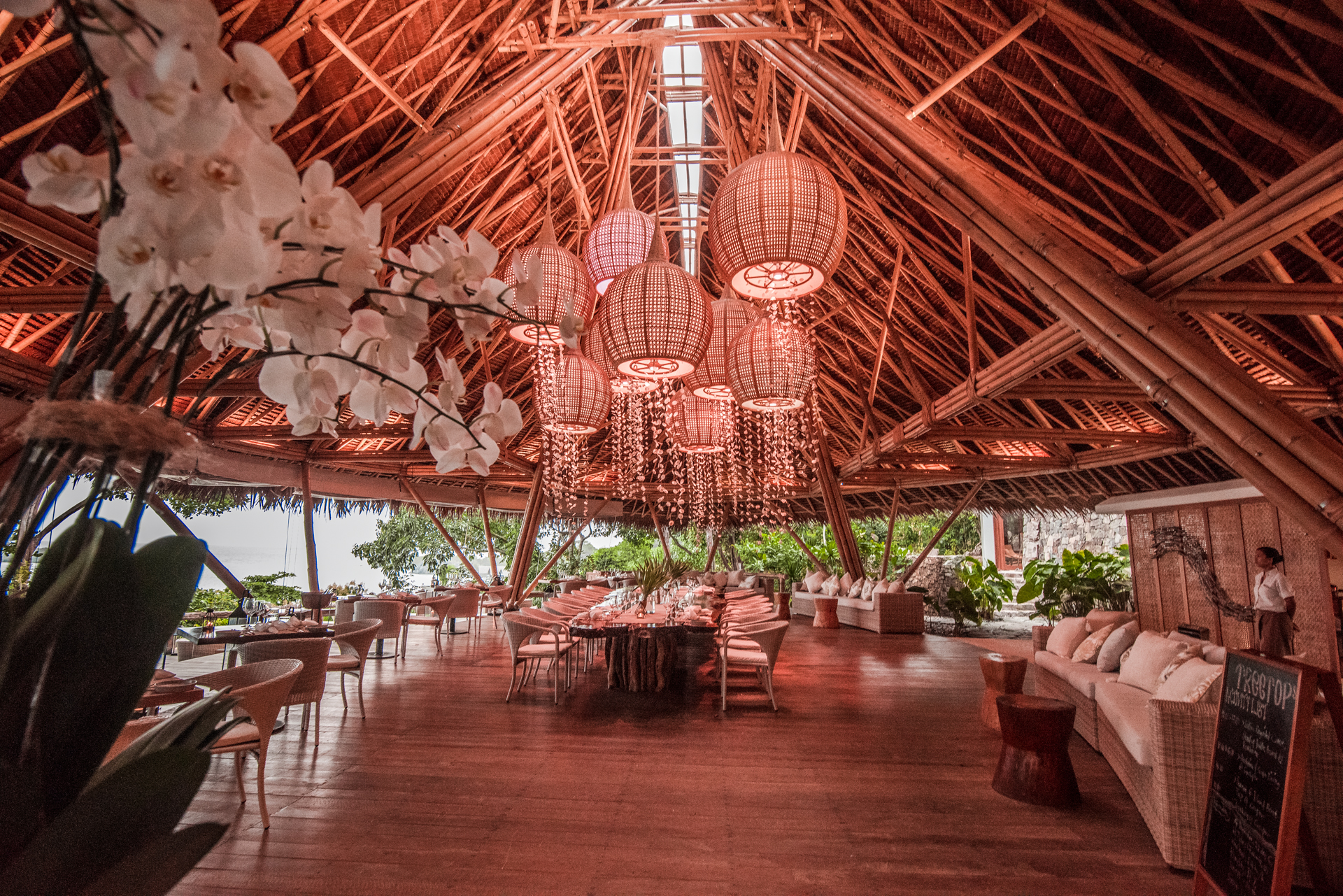
The design of Bawah Reserve was a project of preservation, a lesson of local craftsmanship,
nature-inspired ideas and subtle aesthetics. Though we wanted to keep the resort natural, we also wanted to anchor every major space in the resort with a signature art sculpture – something eye-catching but that also told a story.
Designer Boon Sim said the sculptures had to pass two tests: first, they needed to be
“whimsical and sea-inspired” and second, they must “demonstrate local craftwork.”
So we didn't turn to world-renowned artists or big names in the art industry. No.
Instead, we passed simple sketches to local craftsmen, who used materials they had around
them – wire mesh, ropes, fishing lines and driftwood – to turn our visions into artistic
realities.
Today, media and guests often comment on the sculptures. So we’re sharing the stories
behind Bawah’s largest and most beautiful sculptures with you here.
Where: Treetops Restaurant
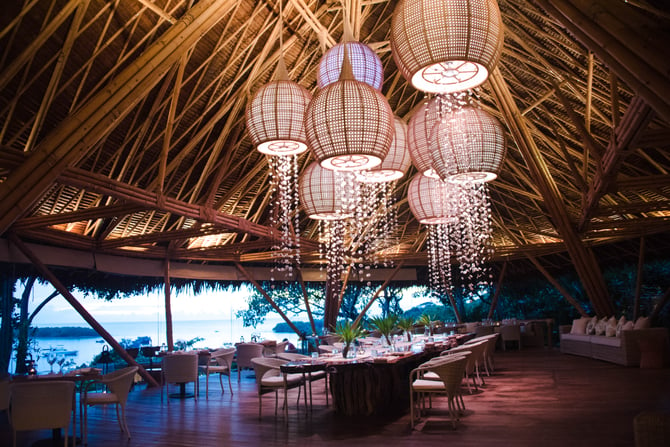
If you haven’t seen it, Conde Nast Traveller describes this sculpture, like this: “The big
design statements have been saved for the main building, where a swarm of jellyfish
chandeliers are strung across the dining room.”
The design of Treetops, and its latticed bamboo roof, is a piece of art in itself. Choosing art to
fit within it was a challenge. Boon came up with a simple idea to use the lighting as artwork.
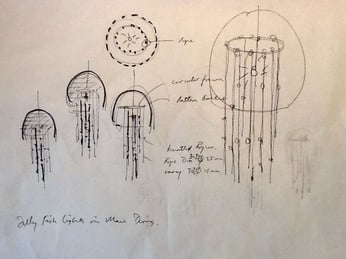
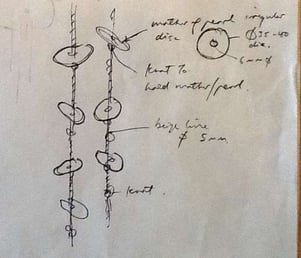
He drew a sketch of curves and shapes that began to look like a bloom of jellyfish with
requests that the piece be able to move in the wind and create subtle natural sounds.
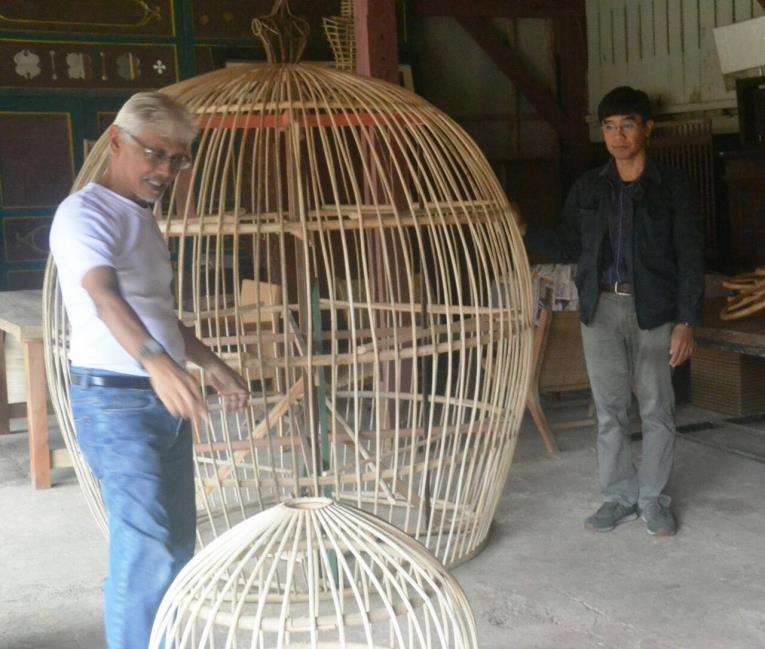
A few weeks later, the local craftsmen delivered the sculpture, and the space was transformed.
Boon loved the finished piece so much that he decided to put a smaller version into every
tented beach suite:
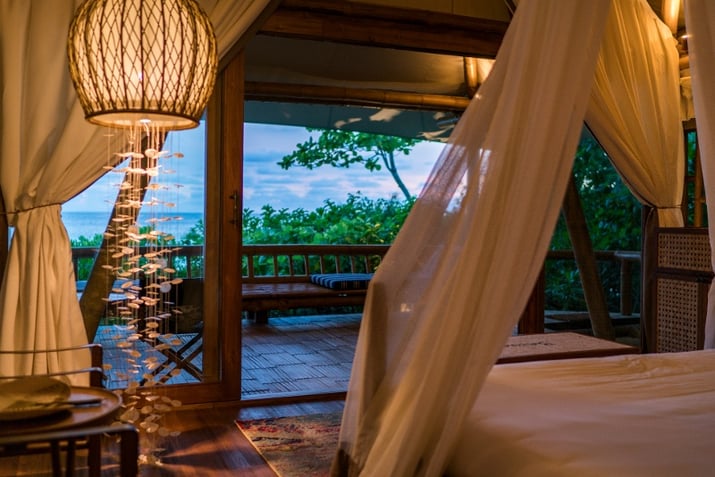
Where: Jules Verne Bar
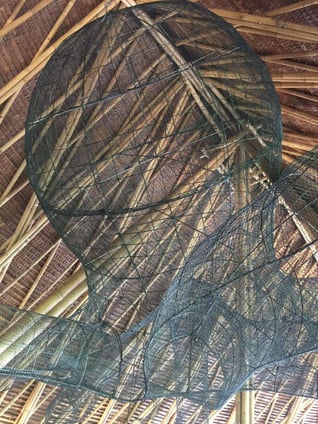
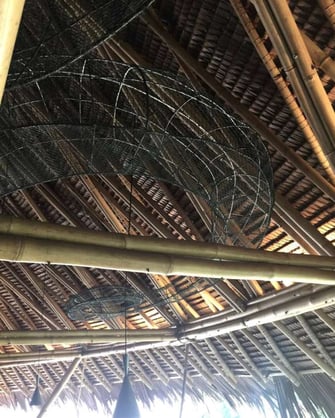
The Financial Times wrote that our “interiors (are) full of winking references to marine life,
with… a mammoth wire-mesh octopus installation at the Jules Verne bar.”
The article is right; the sculpture in our bespoke cocktail bar is made of wire mesh, a vision
of sea creatures inspired by “2,000 Leagues Under the Sea” brought to life.
The space was rather tricky to navigate, but we succeeded in installing a giant octopus – with its long spindly tentacles dangling from the bamboo roof – with the help of art students at Bandung University.
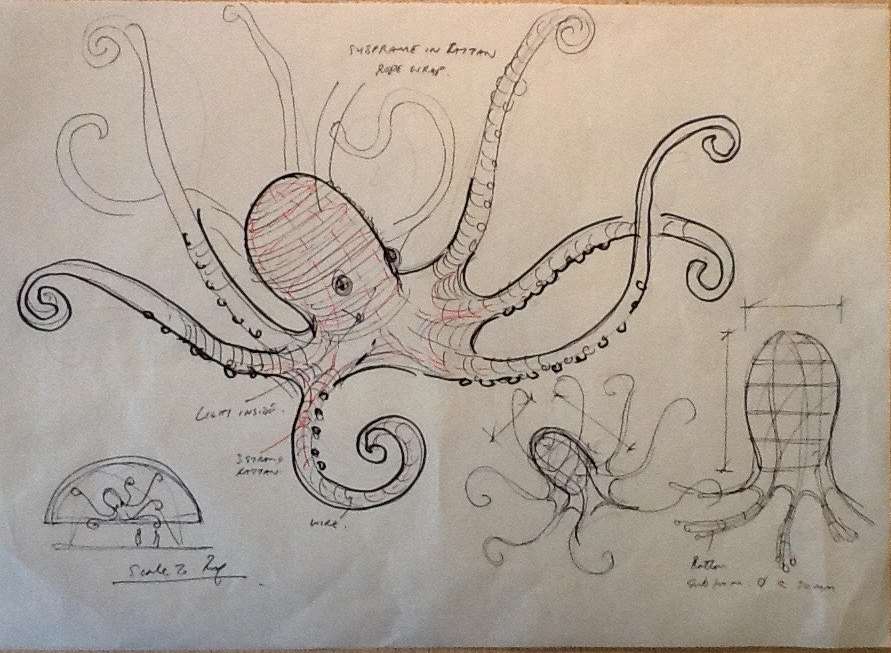
The original plan was to create a wood sculpture wrapped in rattan, but when we saw the beautiful metal finish, we couldn’t possibly cover it. The mesh was perfect, and the decision was made to keep it as it was.
Where: Grouper Bar
World Travel Magazine said that the Grouper Bar is easily “identified by the giant grouper
sculpture made from driftwood.”
As our main beach bar and meeting point, it was only fitting to use driftwood –
ordinary branches that are transformed into something of great beauty by the power of the
oceans – to decorate this space. During Bawah’s construction, Boon and owner Tim Hartnoll
spent lots of time at Bawah and often bought fresh fish from local fisherman to eat. Boon was
inspired by the shapes of the fish in the fishermen’s basket. He drew a grouper fish, common
to the lagoon, and shared it with an artist in Java.

Within three weeks, a mock-up was created, and this sculpture was commissioned.
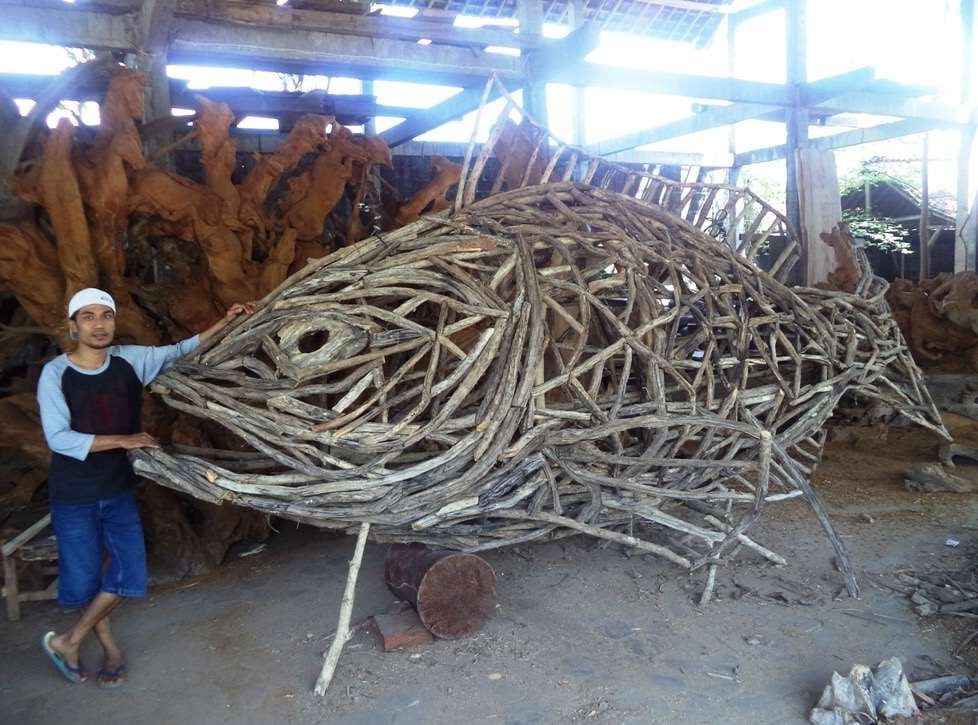
Where: Bawah Reserve’s jetty #jettygram
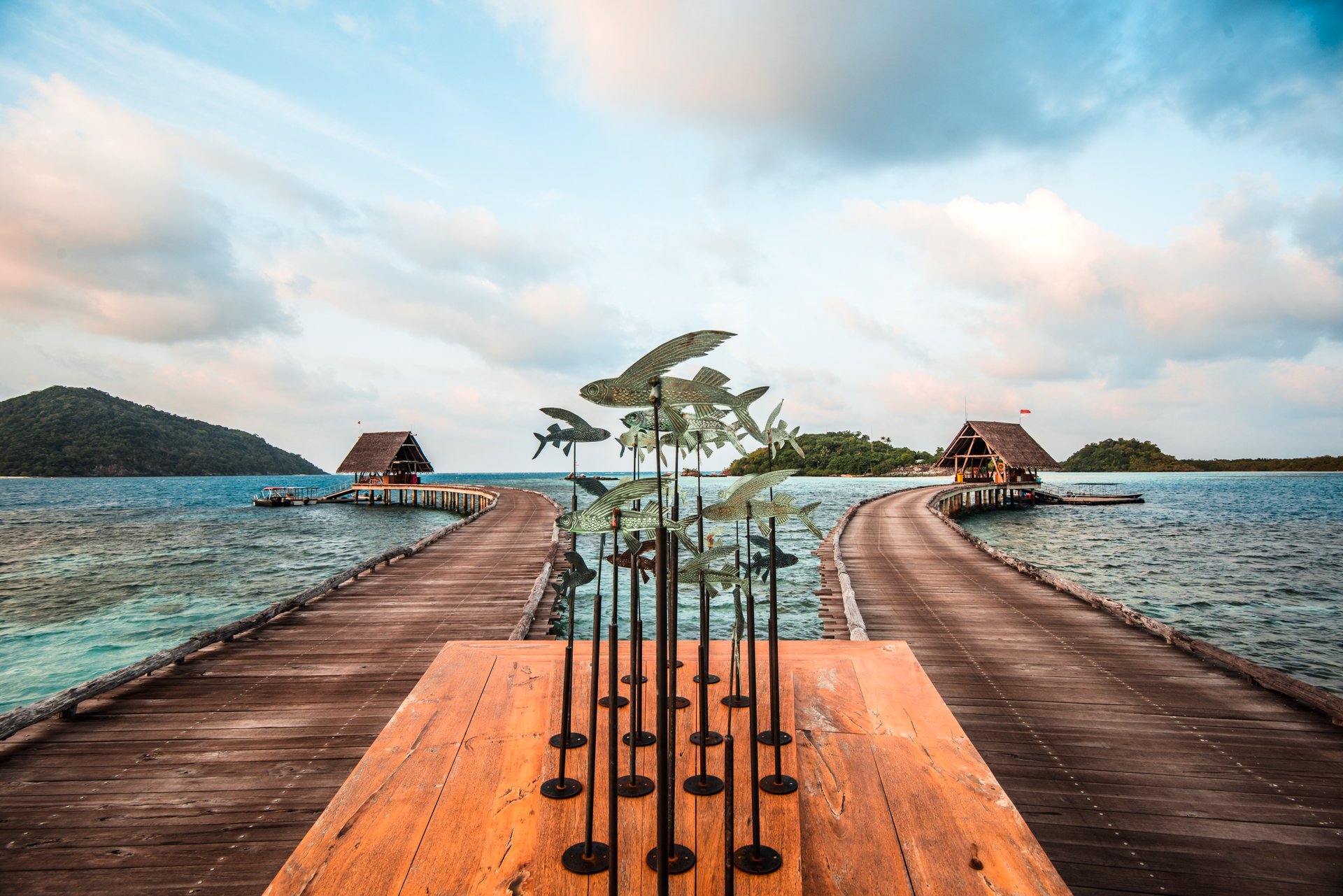
The newest art installation at Bawah is the Flying Fish Weather Vane on the resort’s main
jetty. Designed as something fun to greet arriving guests, the sculpture marks the Y junction
of the jetty and is inspired by the flying fish that weave through the waves in our lagoons.
The sculpture is also a weather vane; it indicates the direction of the wind. Made from
patinated brass metal, each fish is on a pivot and turns with the wind. A simple sketch sent
from Boon to a Javanese village metal worker resulted in this beautiful and practical design.
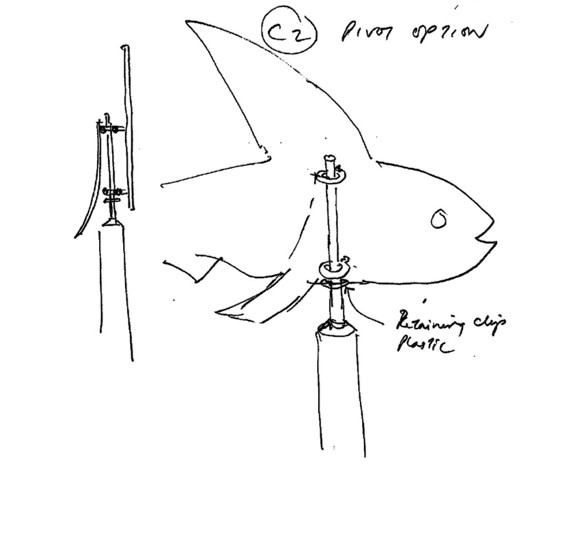
Check out these pretty postcards showcasing our iconic sculpted art:
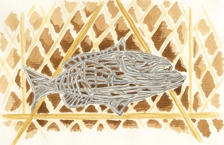
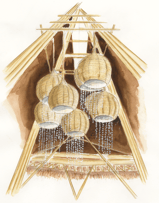
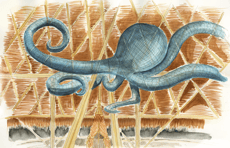
Come see these sculptures for yourself. We offer architectural tours of the island to show
these designs in real life. Make your Bawah Reserve enquiry here:
j
An all-inclusive experience, redefined…At Bawah Reserve in Indonesia’s pristine Anambas...
Begin your day at Bawah Reserve with your choice from our Juice Butler service: fresh...
If you’ve noticed the beautifully patterned fabrics in your villa, you’ve already...
Ready to make a splash?For guests who are both swimming-fit and up for a challenge,...
Welcome to the thermal contrast therapy facility at Aura Sanctuary at Bawah Reserve,...
Planning your dream private island holiday in Indonesia? Here at Bawah Reserve, we...
3 ways to repost or use our Instagram Reels
We love that you want to share a little...
2024 wellness trends were exciting for sure, but it keeps getting better! The top...
A new subtle yet powerful trend - that of being “demure” and “mindful” - has been...
When we think of bees, honeybees often come to mind. However, at Bawah Reserve, a...
In the heart of Southeast Asia lies a hidden gem that promises a retreat into nature,...
It’s safe to say that if you ask someone to name a tropical island destination, they will...
As we step into 2024, the world of well-being is teeming with transformative trends that...
2 years ago for Earth Day 2022, we created 10 sincere pledges for investing in the planet...
Starting to plan your dream wedding? Some couples have a clear idea of their perfect...
We are often asked about the best time of year to schedule a trip to Bawah Reserve.Which...
Our faraway paradise is well worth the journey and there are many ways to get to Bawah,...
© Bawah Reserve 2024. Anambas. Riau Islands. Indonesia
leave a comment